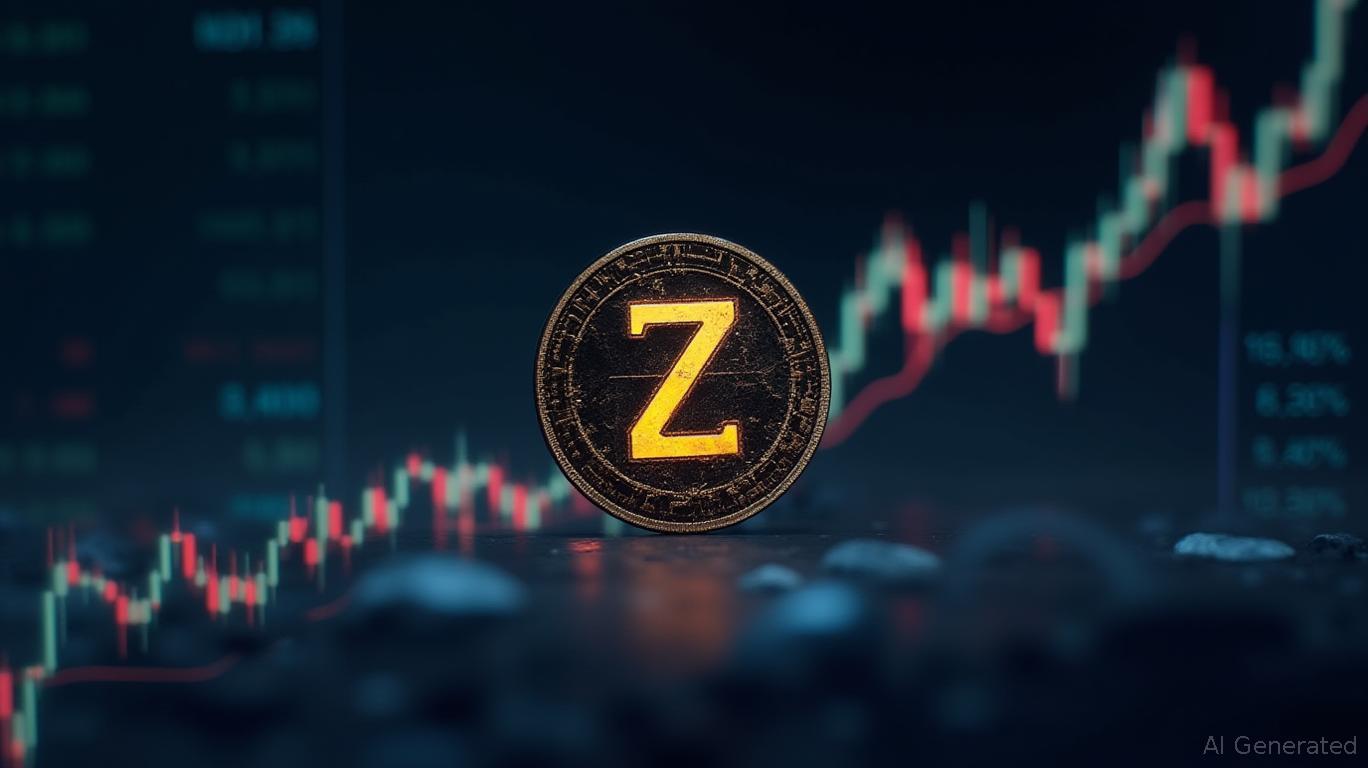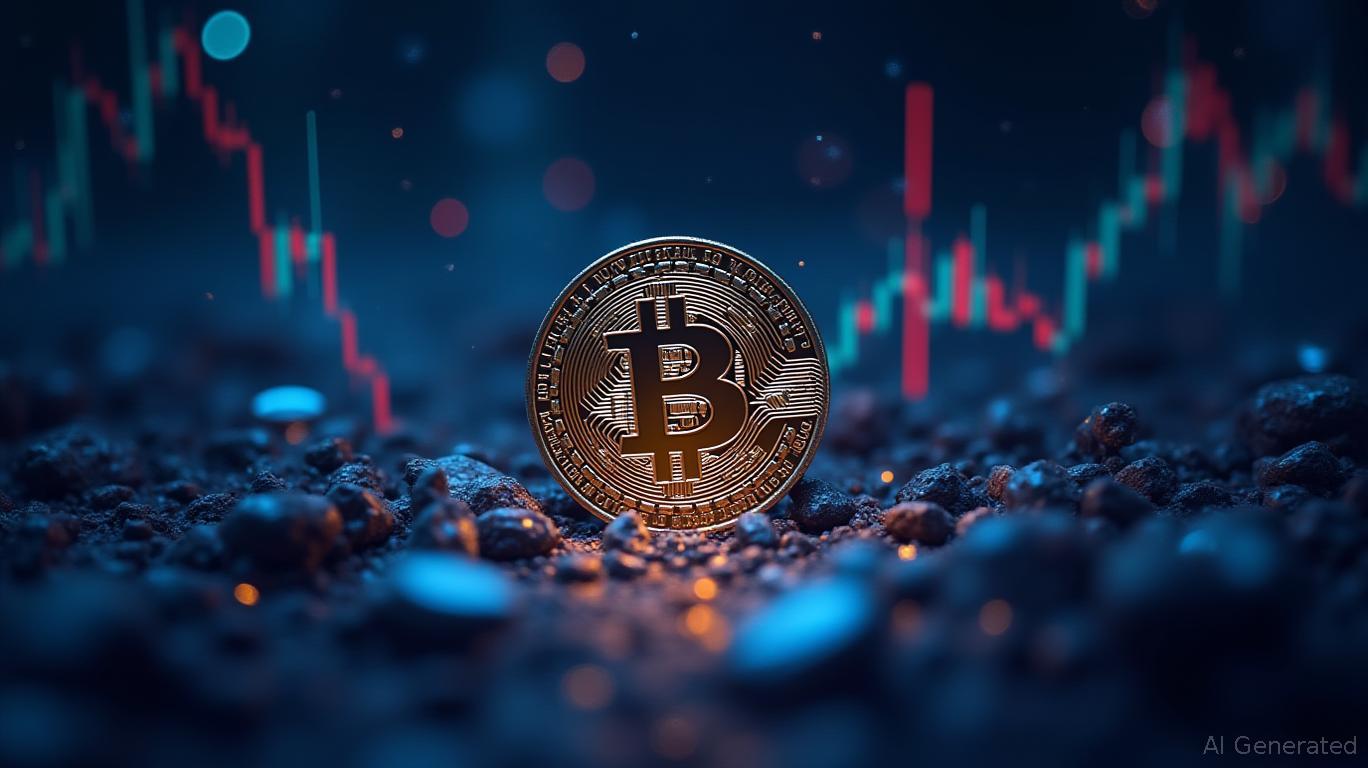MEV Takes Advantage of DeFi Transparency, Triggering Concerns Over Fairness
- MEV exploits blockchain transparency to reorder transactions, creating a "hidden tax" that deters institutional DeFi adoption and harms retail users. - Sandwich attacks and front-running cost retail investors up to 80% of MEV-driven losses, with 24% of Ethereum blocks affected annually. - Trusted execution environments (TEEs) emerge as a solution by privatizing transaction data, potentially unlocking $trillions in institutional capital. - Experts warn MEV centralizes power and inflates costs, requiring g
Maximal Extractable Value (MEV) is increasingly recognized as a major obstacle to the widespread adoption of decentralized finance (DeFi) by institutions, while also imposing heavy financial burdens on individual crypto investors. MEV allows miners or validators to rearrange transaction sequences for their own gain, effectively creating a "hidden tax" that discourages financial institutions from participating in DeFi, and contributes to greater market instability and inefficiency, as reported by
MEV takes advantage of the information gap in how blockchain transactions are ordered. Because transactions are visible to the public before they are finalized, savvy actors can exploit this by using tactics like sandwich attacks—placing trades before and after a user's transaction to drive up costs. The Coinotag report references data from the European Securities and Markets Authority (ESMA), which indicates that MEV-related activities impact about 24% of

The lack of privacy in DeFi protocols has become a significant barrier for institutional players, who need confidentiality to avoid being front-run or manipulated. Aditya Palepu, CEO of DEX Labs and a key contributor to DerivaDEX, pointed out that institutions are the backbone of financial markets, and their absence due to MEV vulnerabilities leaves retail participants facing less liquid markets and increased costs, as he told Cointelegraph. Palepu added, "When institutions are unable to participate efficiently, it negatively impacts everyone," emphasizing that insufficient infrastructure limits the liquidity and stability necessary for DeFi to grow.
Trusted execution environments (TEEs) are being explored as a promising solution, as they encrypt transaction information on the user's side and only decrypt it in secure enclaves after transactions are ordered. The Coinotag report notes that this method keeps order flow private, making front-running unfeasible. Palepu stressed that TEEs could "create a more level playing field" by ensuring confidential order processing, encouraging more equitable DeFi engagement, and reducing exploitative behaviors. Although TEEs are still in the early stages of adoption, the report suggests that their implementation could attract trillions in institutional investments, bringing greater stability and less volatility to crypto markets.
Industry analysts caution that MEV's contribution to centralization and rising costs threatens the foundational ideals of DeFi. While blockchain networks are built for transparency, this openness has been misused to create unfair advantages similar to those in traditional finance. Tackling MEV is not just a technical problem—it also demands governance reforms and collaboration to align the interests of all parties involved. As the debate over MEV's future intensifies, experts told Cointelegraph that the evolution of DeFi will depend on finding a balance between innovation and fairness, ensuring protections for both individual and institutional users.
Disclaimer: The content of this article solely reflects the author's opinion and does not represent the platform in any capacity. This article is not intended to serve as a reference for making investment decisions.
You may also like
Solana News Update: Institutional Shift Toward Bitcoin Diminishes Solana ETF Progress
- Solana's price fell to $182 on Oct. 30, its steepest drop since Oct. 10, after Jump Crypto sold $205M in SOL for Bitcoin. - Despite $199M inflows into new U.S. Solana ETFs, Bitcoin ETFs saw $191.6M outflows, showing institutional capital shifting to Bitcoin. - Jump Crypto's 1.1M SOL-to-BTC conversion highlighted a "flight to safety" amid trade negotiations, while Solana's staked value dropped 29.65% in 30 days. - Grayscale's Solana Trust ETF conversion and Hong Kong's approval signaled growing institutio

XRP News Today: XRP's Tactical Ascent: Companies Accumulate Digital Asset as a Safeguard Against Macroeconomic Risks
- XRP adoption surges as corporations build treasuries to hedge macroeconomic risks, led by $500M+ investments from Trident Digital, Webus, and VivoPower. - Evernorth becomes largest XRP treasury holder after $1B merger, listing as XRPN on Nasdaq to institutionalize XRP exposure. - Ripple accelerates XRP integration via $1B GTreasury acquisition and regulatory partnerships, positioning XRP for cross-border payments and DeFi. - Upcoming Swell event will highlight XRP's strategic role in supply chain and ass
XRP Latest Updates: Privacy or Regulation? Zcash Emerges as a Rival to XRP Amid 700% Price Jump
- Electric Coin Co. (ECC) unveiled a Q4 2025 roadmap prioritizing Zcash's privacy upgrades, usability, and secure fund management amid a 700% price surge and 4.5M shielded ZEC. - Zcash's optional privacy model and zk-SNARKs expanded anonymity sets, driving institutional interest and surpassing Monero as the largest privacy coin by market cap. - Key upgrades include ephemeral transparent addresses, P2SH multisig for Keystone wallets, and automated address rotation to reduce transaction linkability risks. -

Ethereum Updates: XRP Faces Challenges While ETH Remains Flat, Leading DeFi Users to MUTM's High-Return Protocol
- Mutuum Finance (MUTM) has raised $19M in presale, targeting a Q4 2025 Sepolia Testnet launch with 17,600+ investors. - Its dual-lending model (P2C/P2P) and automated liquidation bot, plus 90/100 CertiK audit, position it as a secure DeFi alternative to XRP/ETH. - With 45.5% tokens allocated to presale and a 500% potential return for early buyers, MUTM's deflationary buy-and-distribute model drives investor optimism. - Future plans include Layer-2 integration and a Chainlink-secured stablecoin, aligning w
